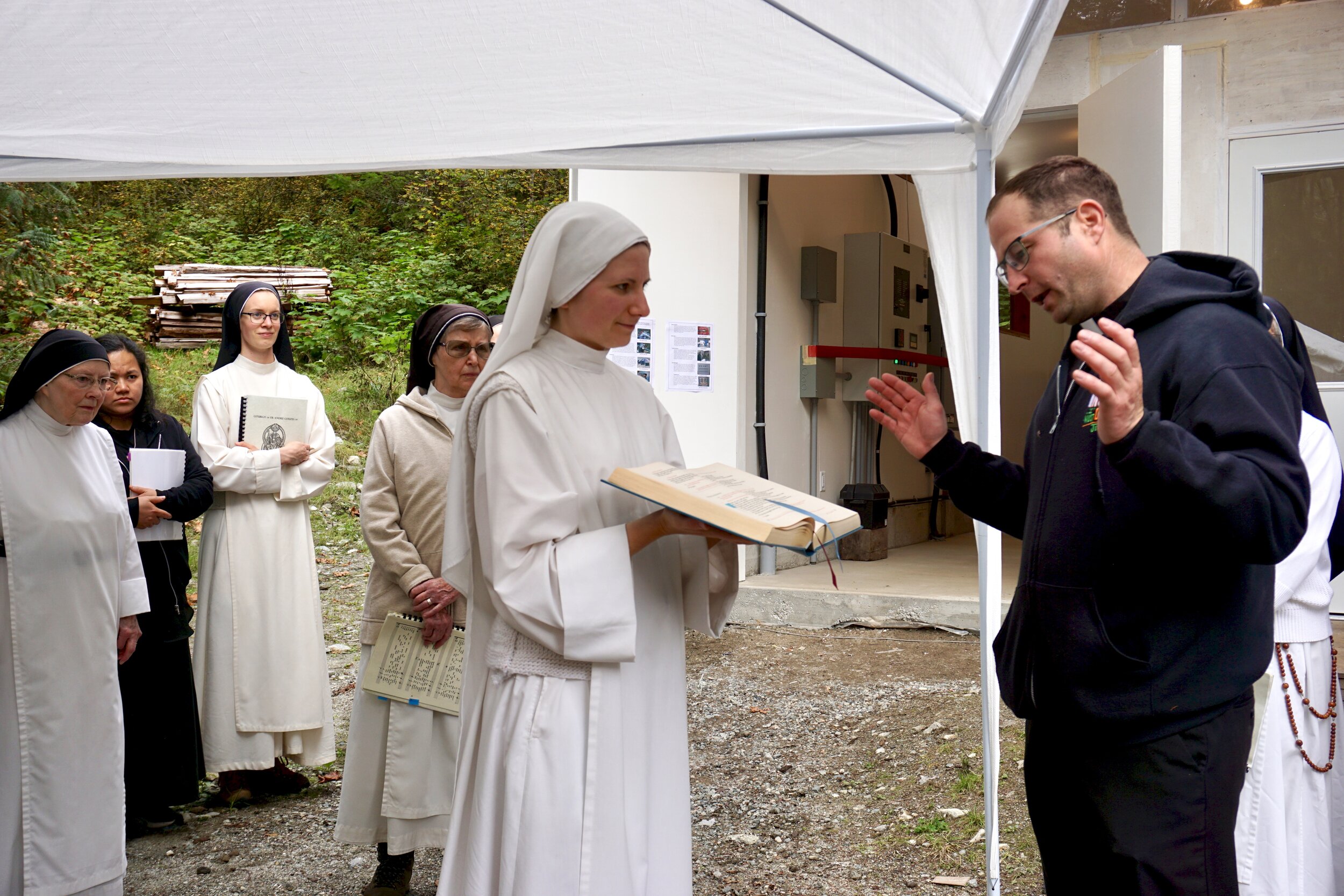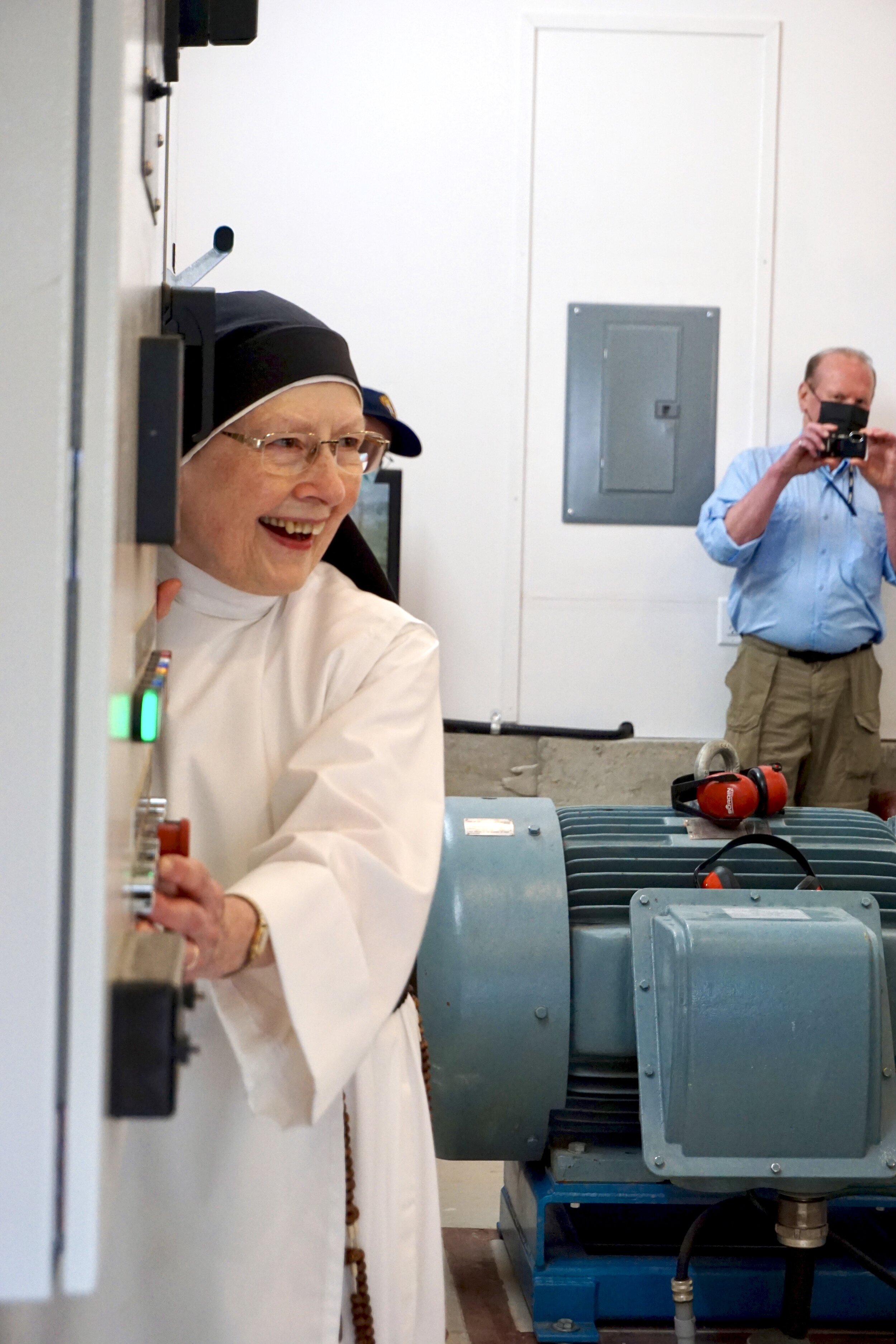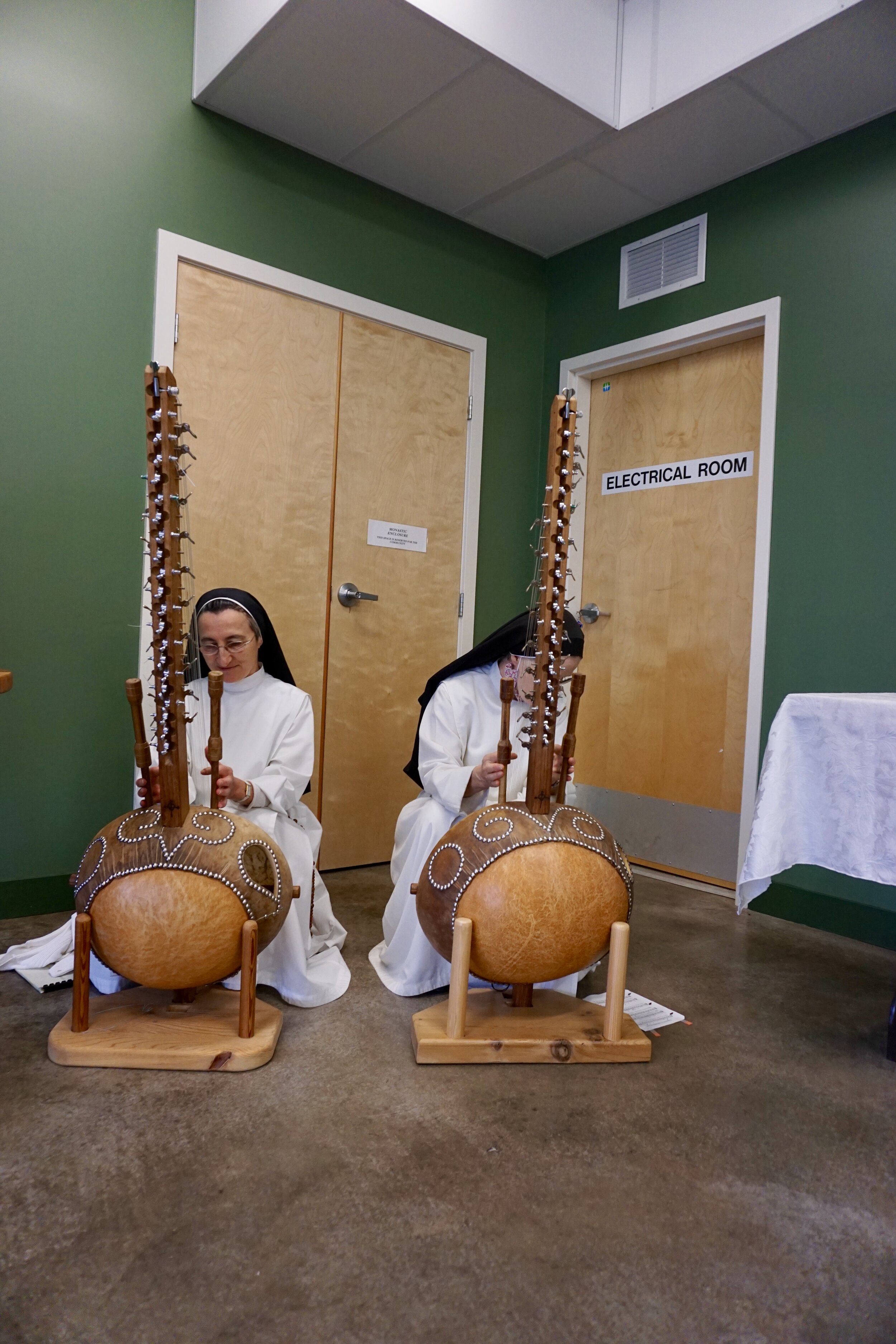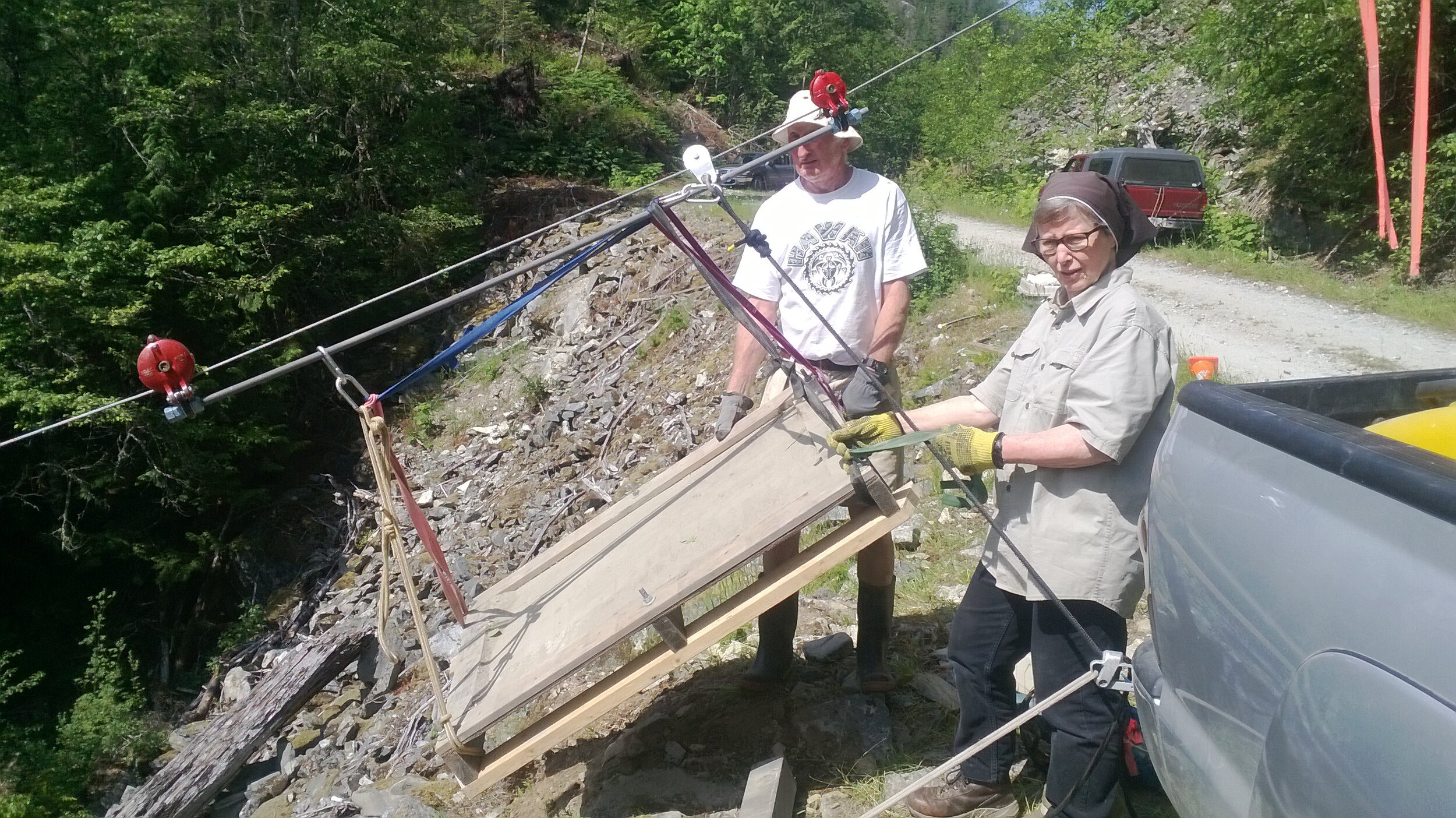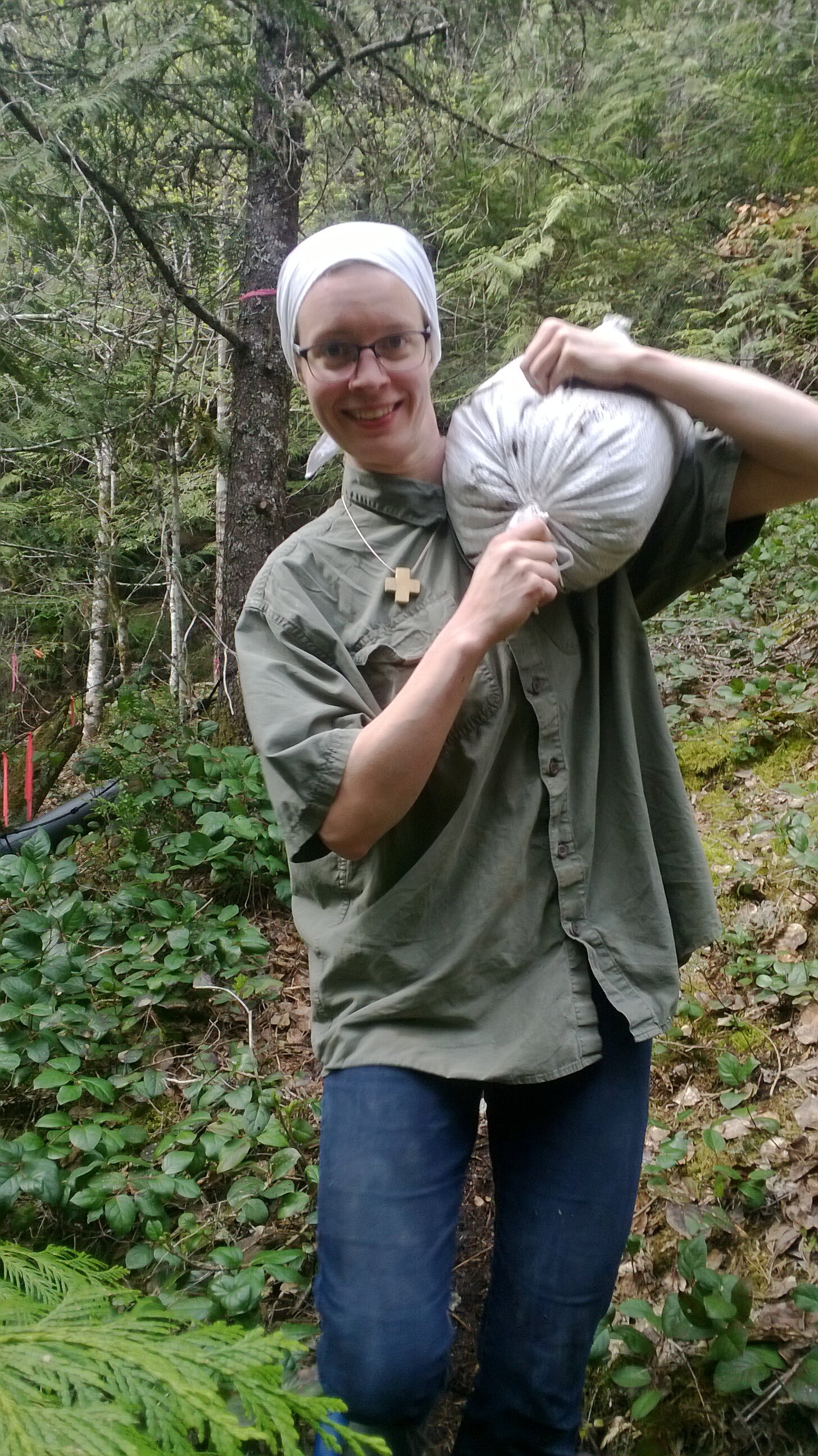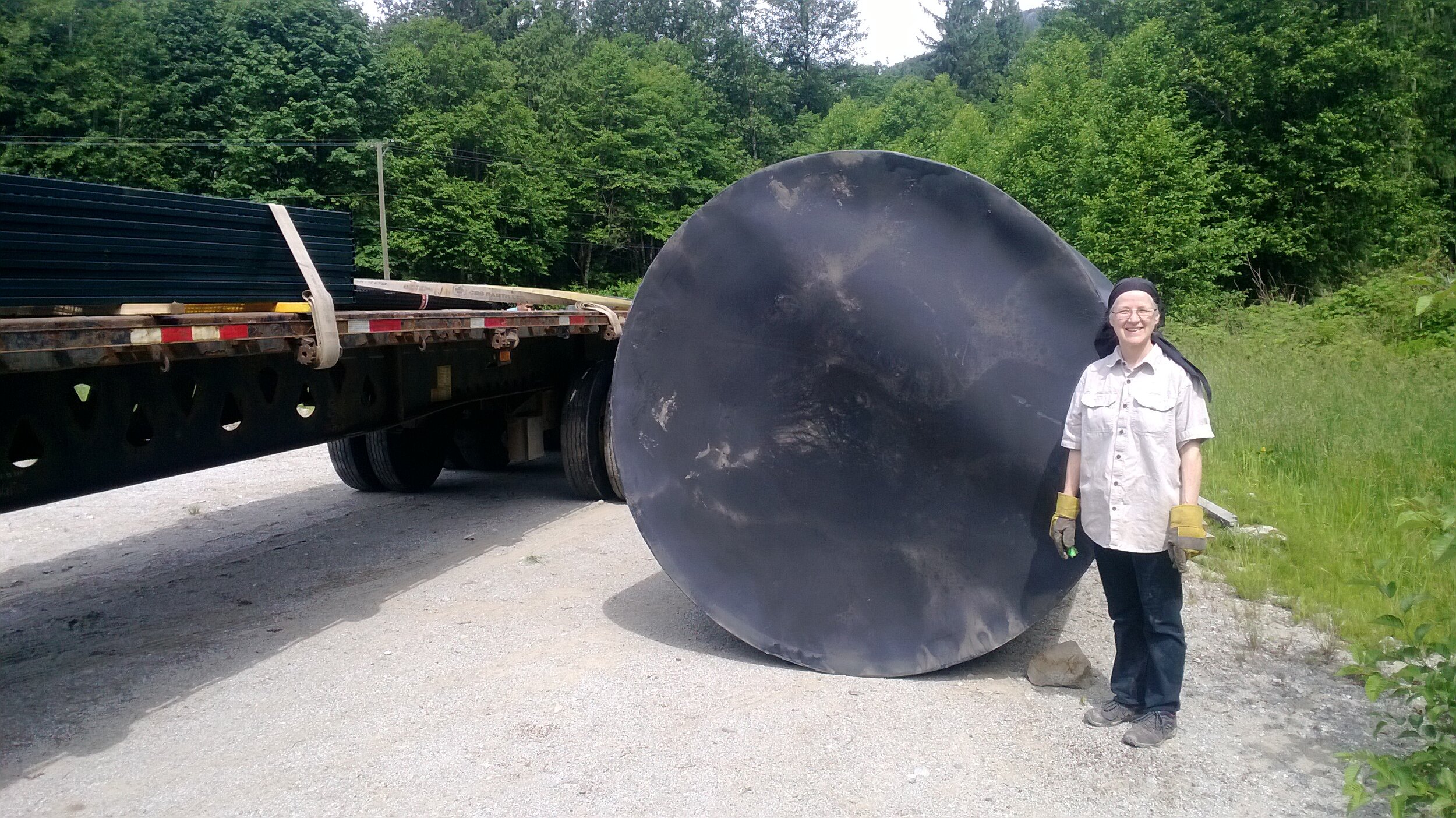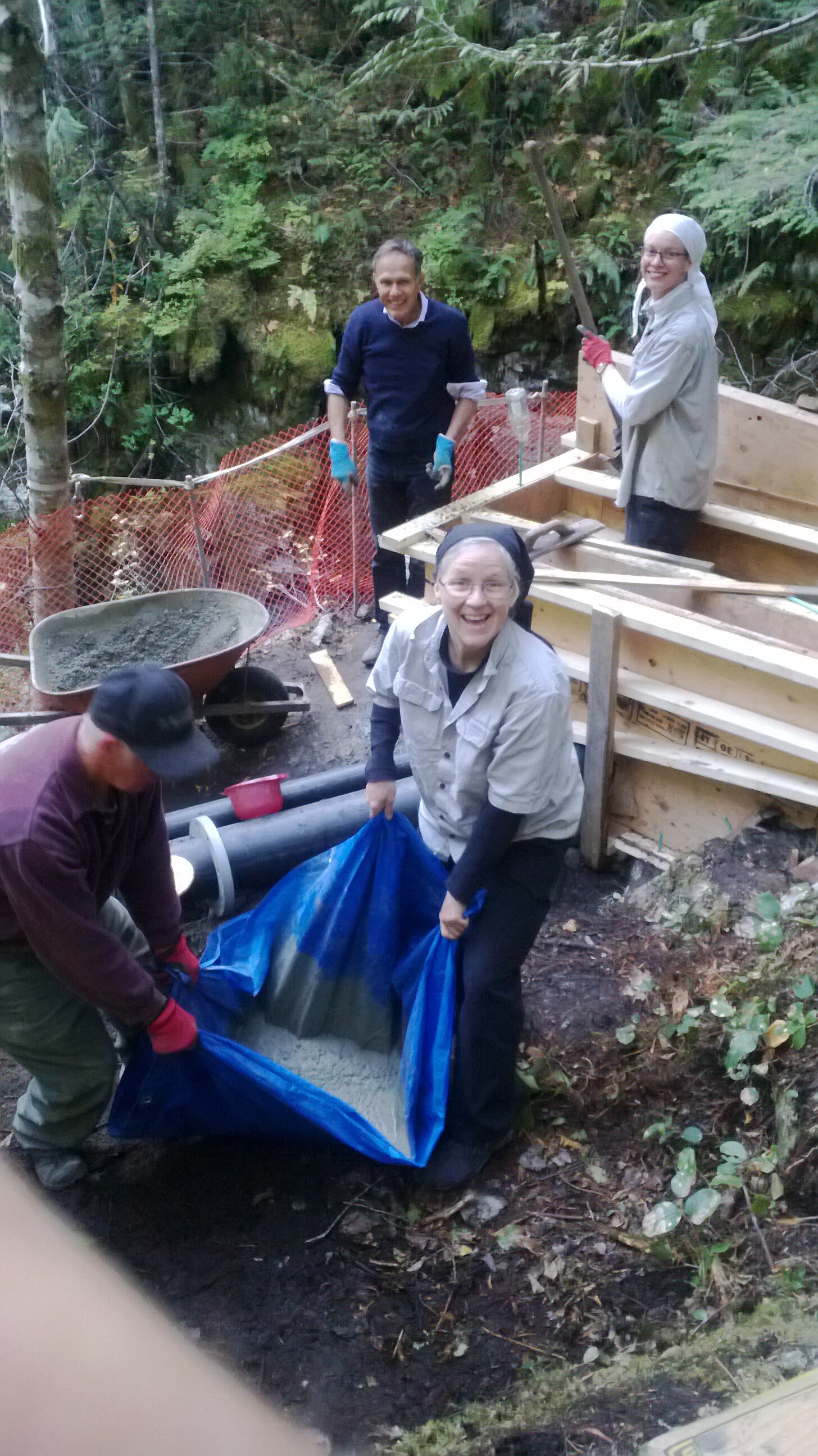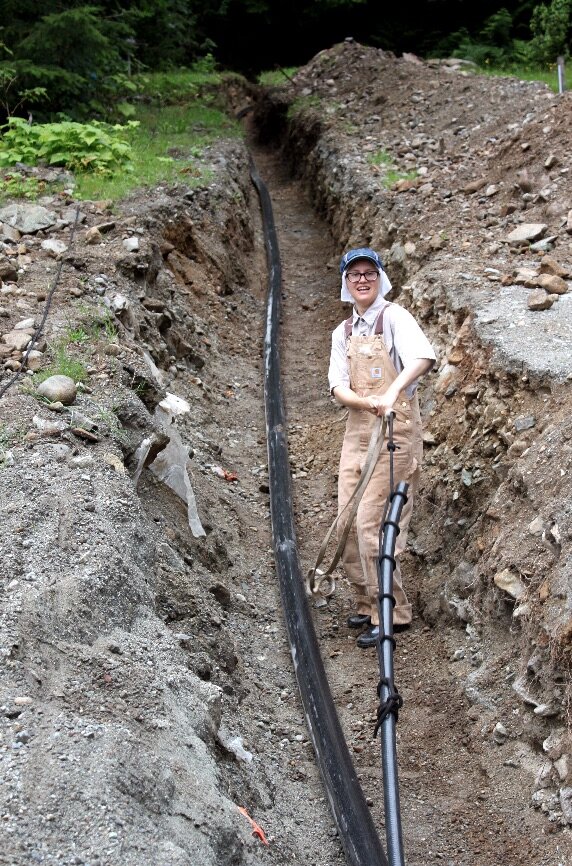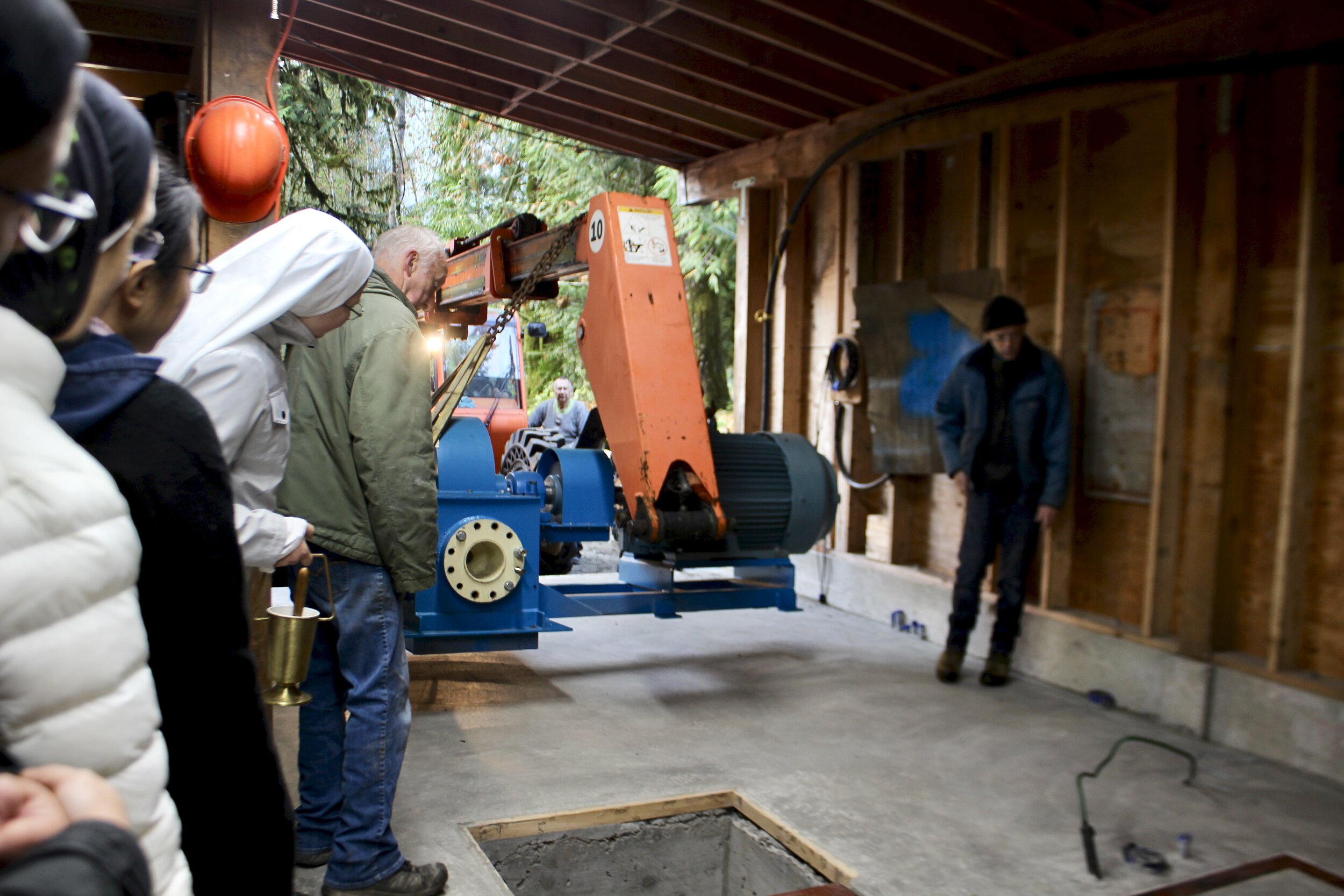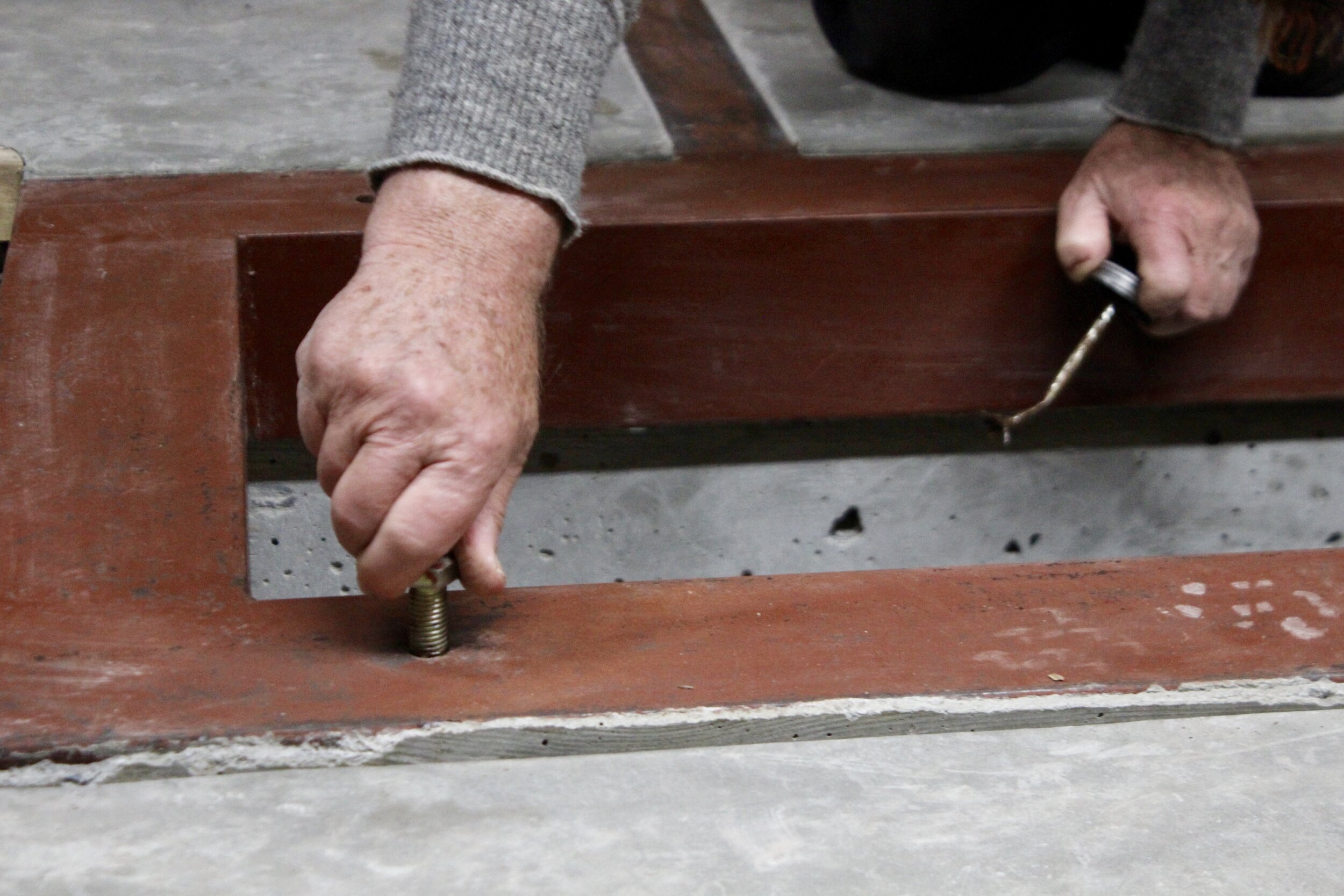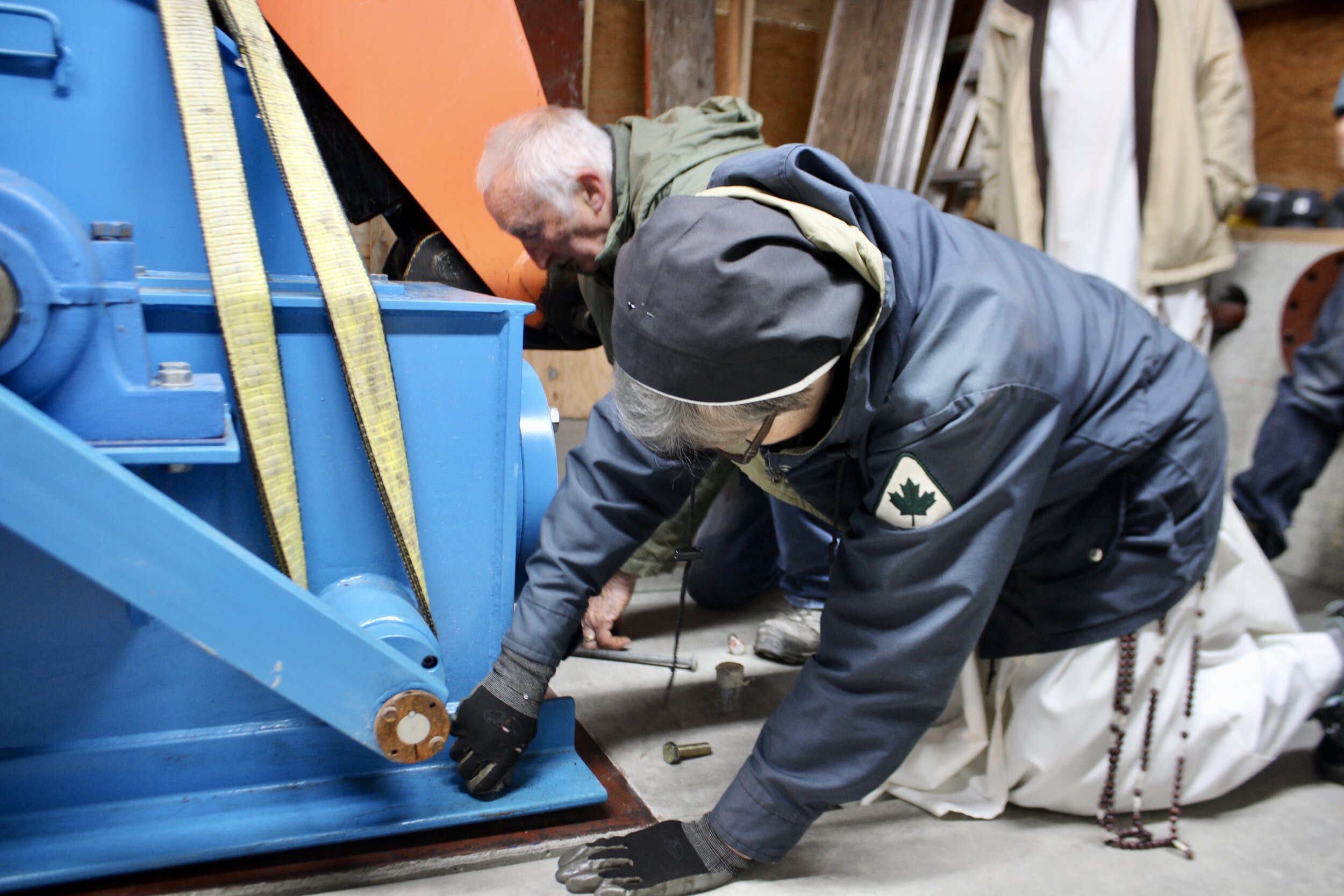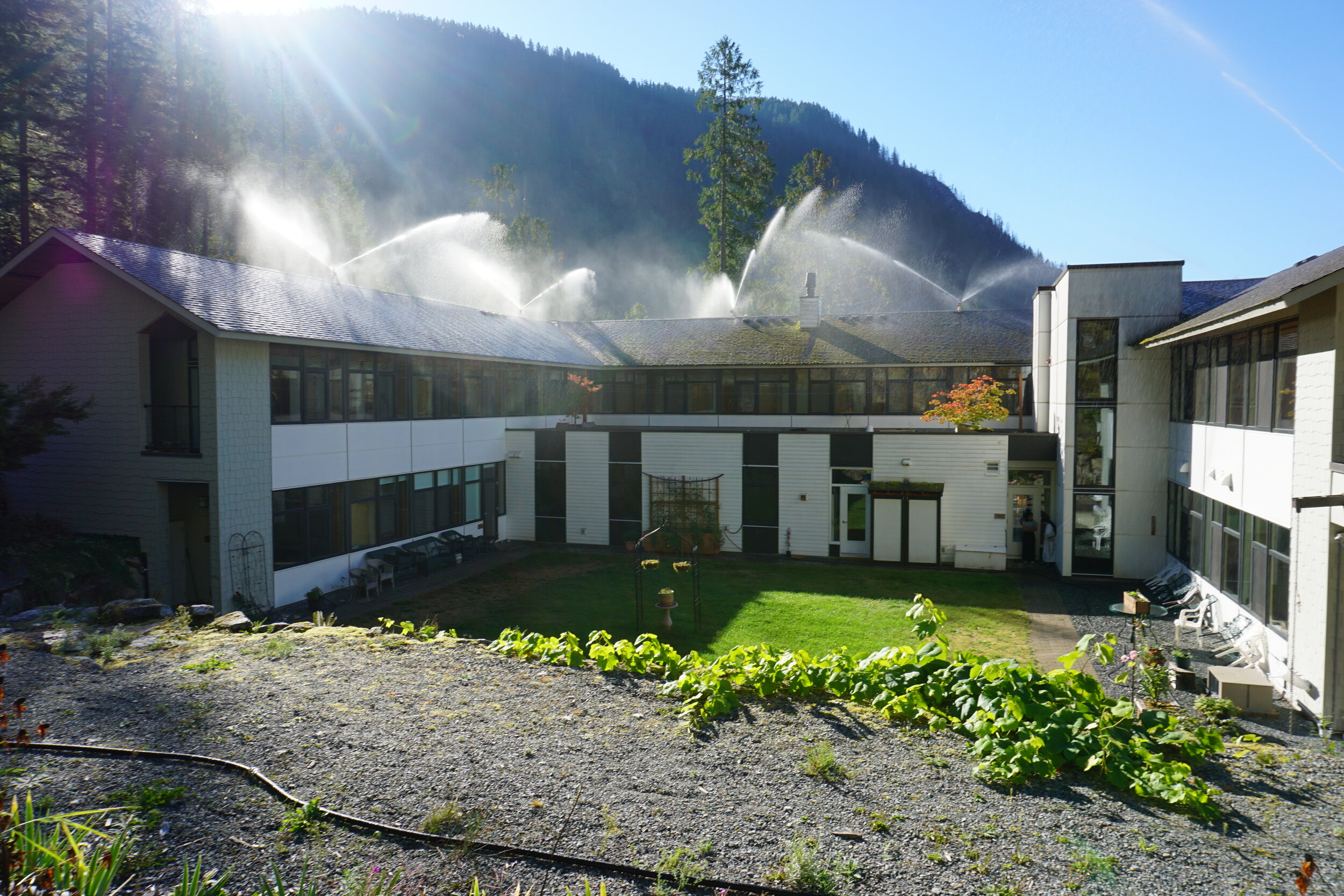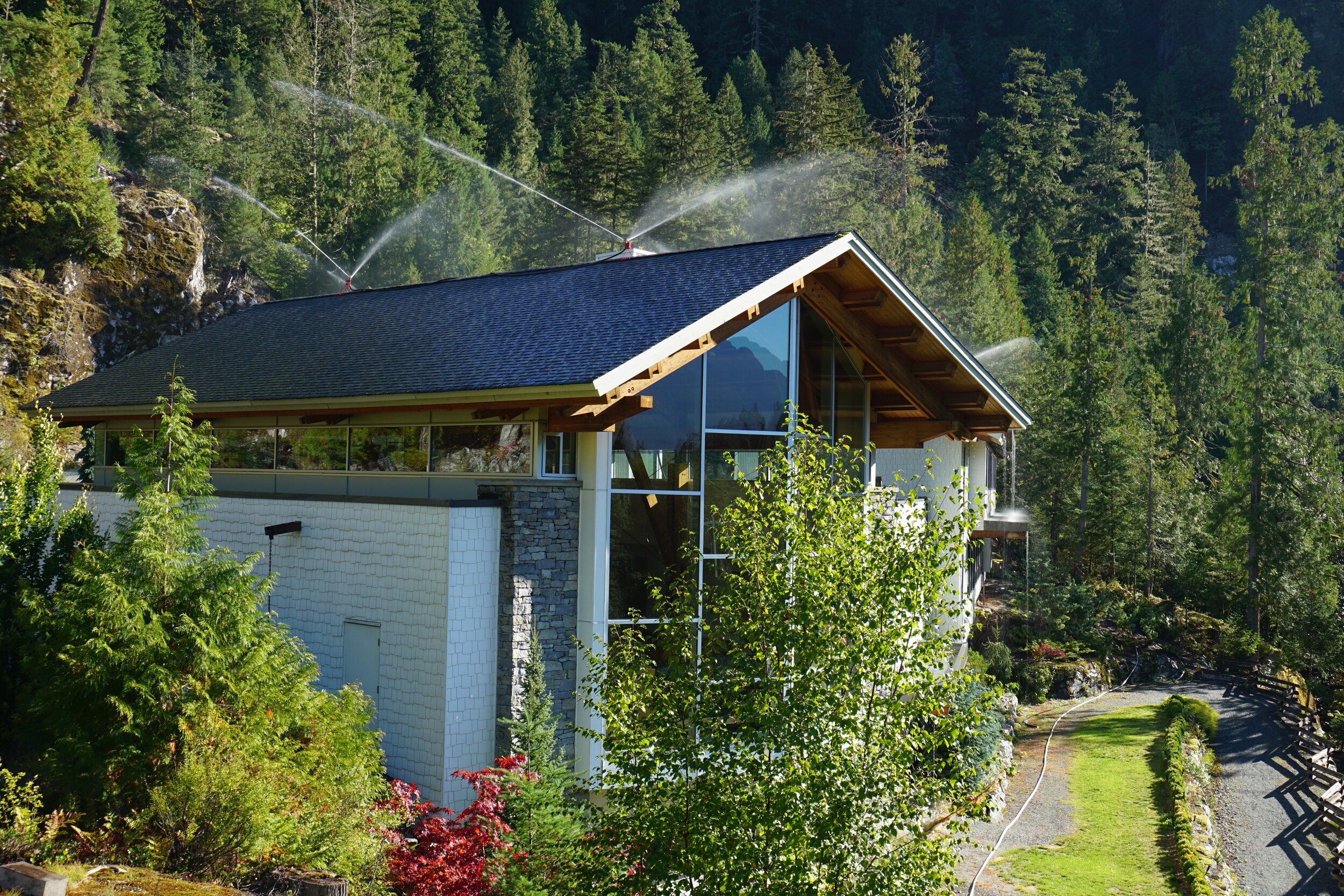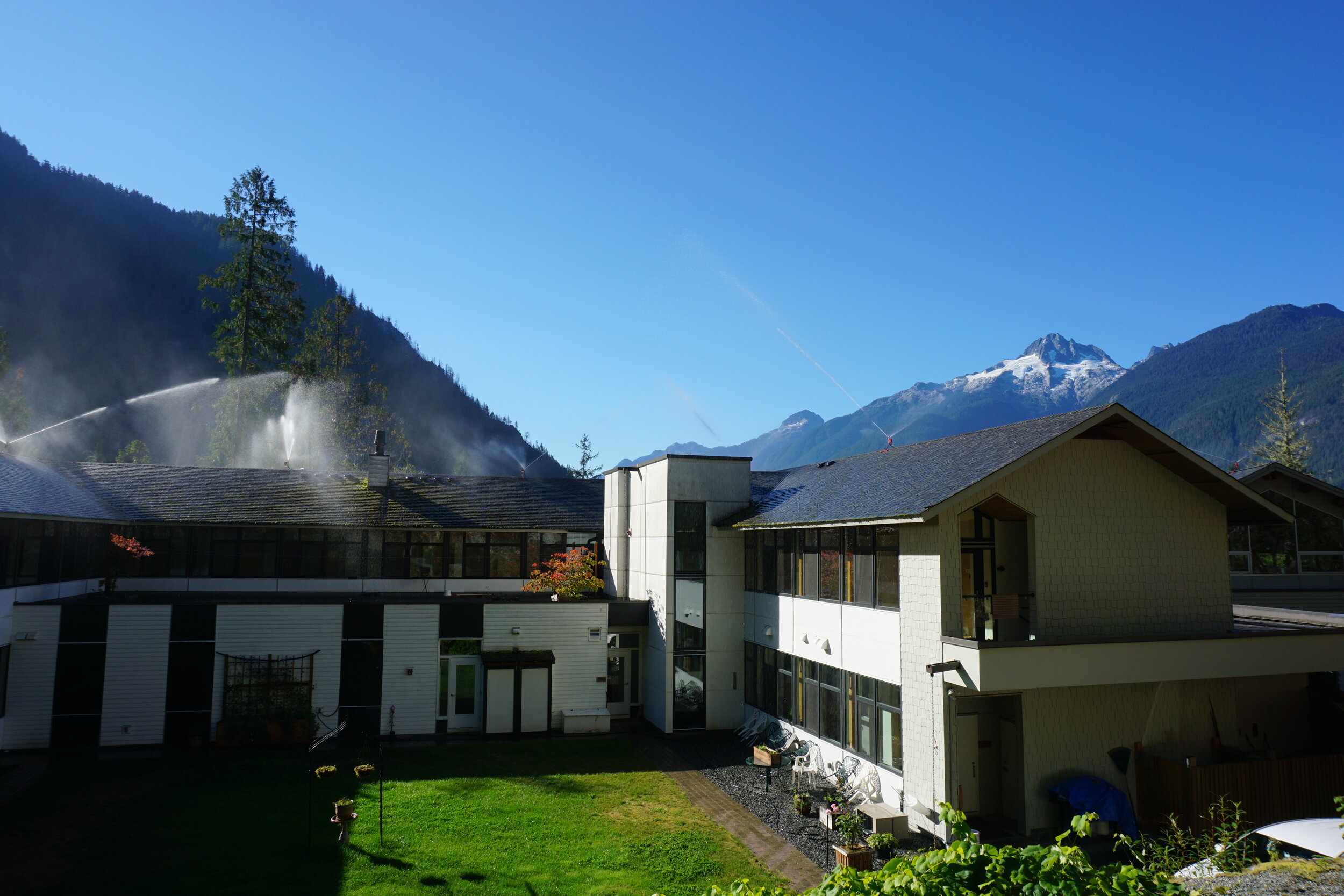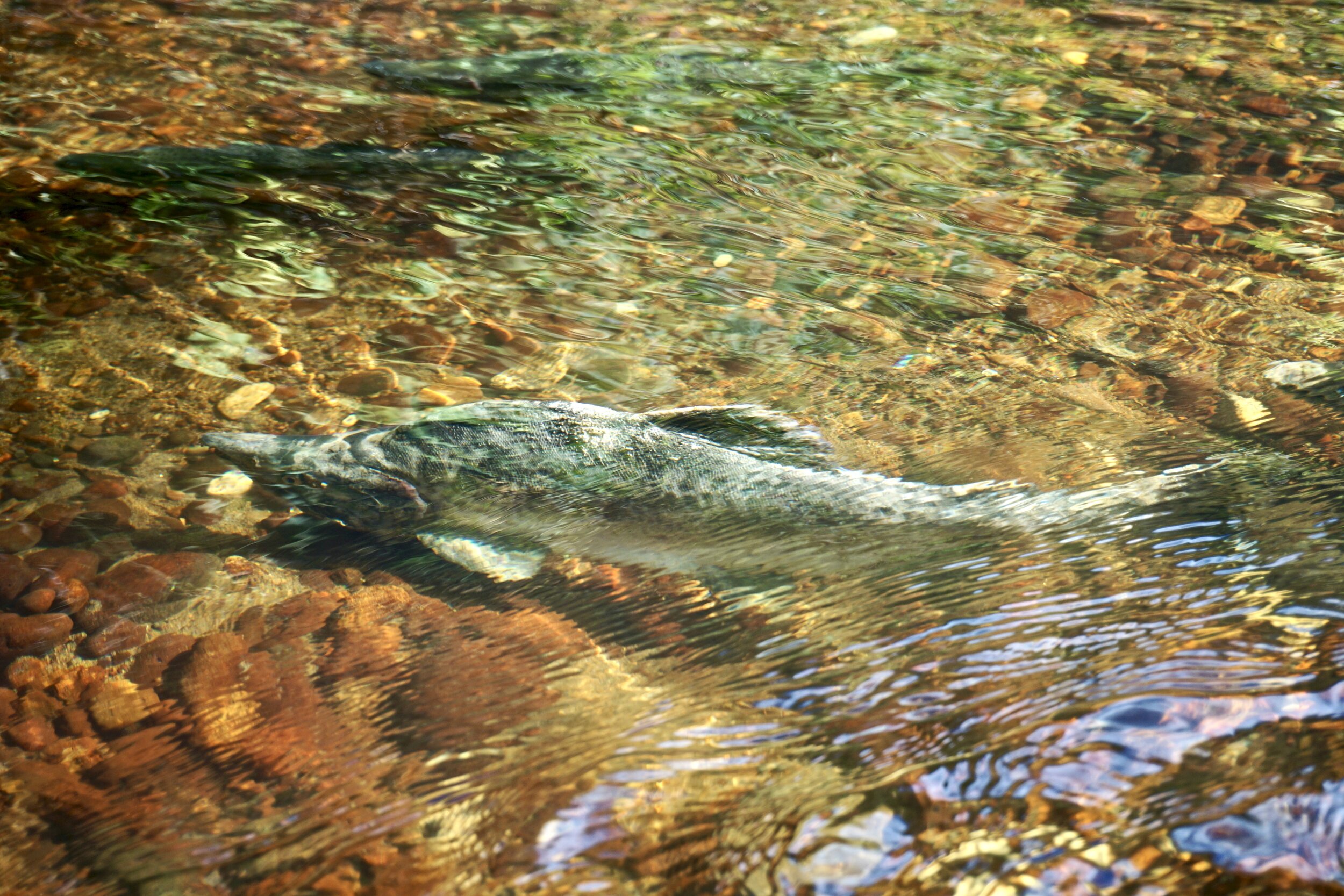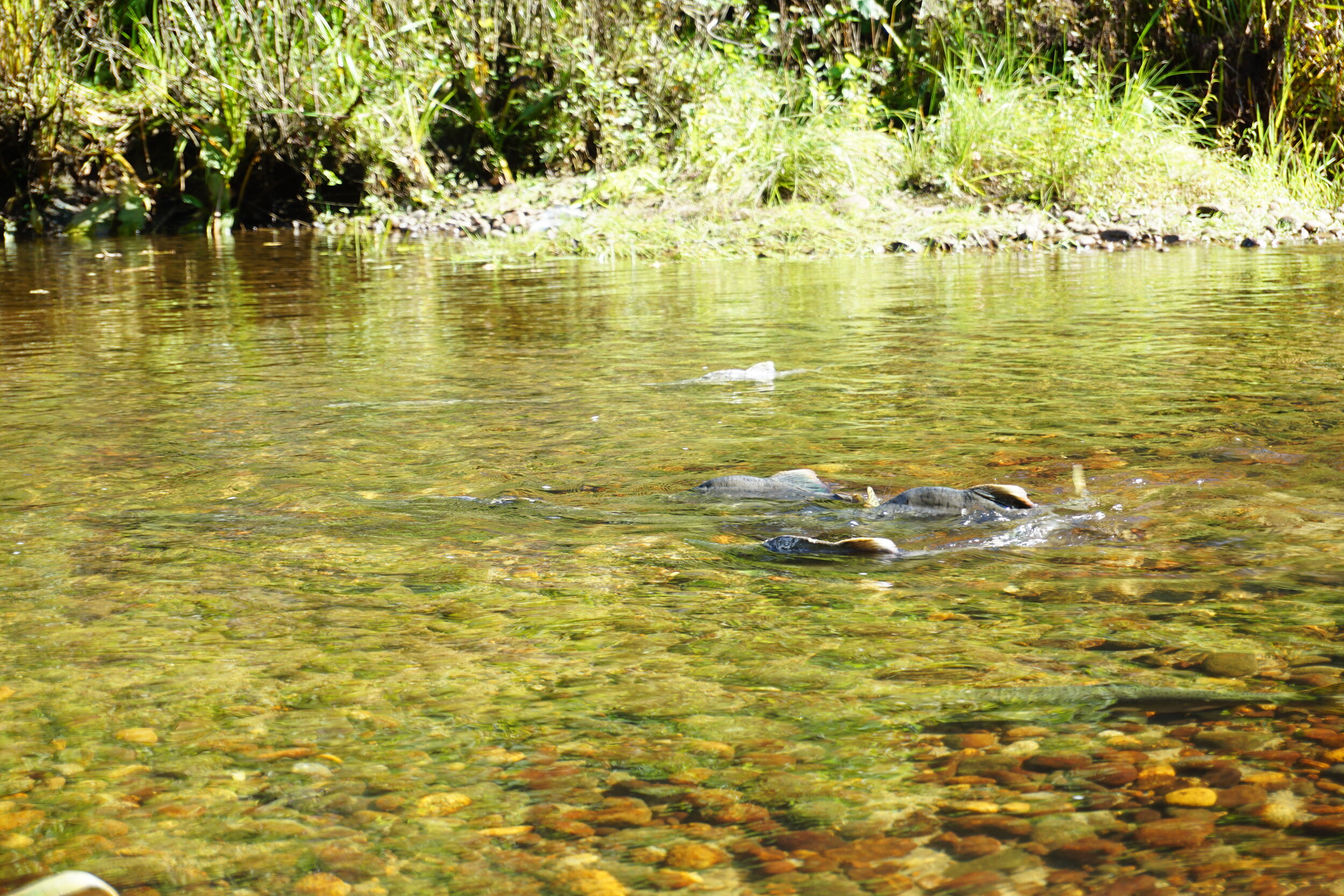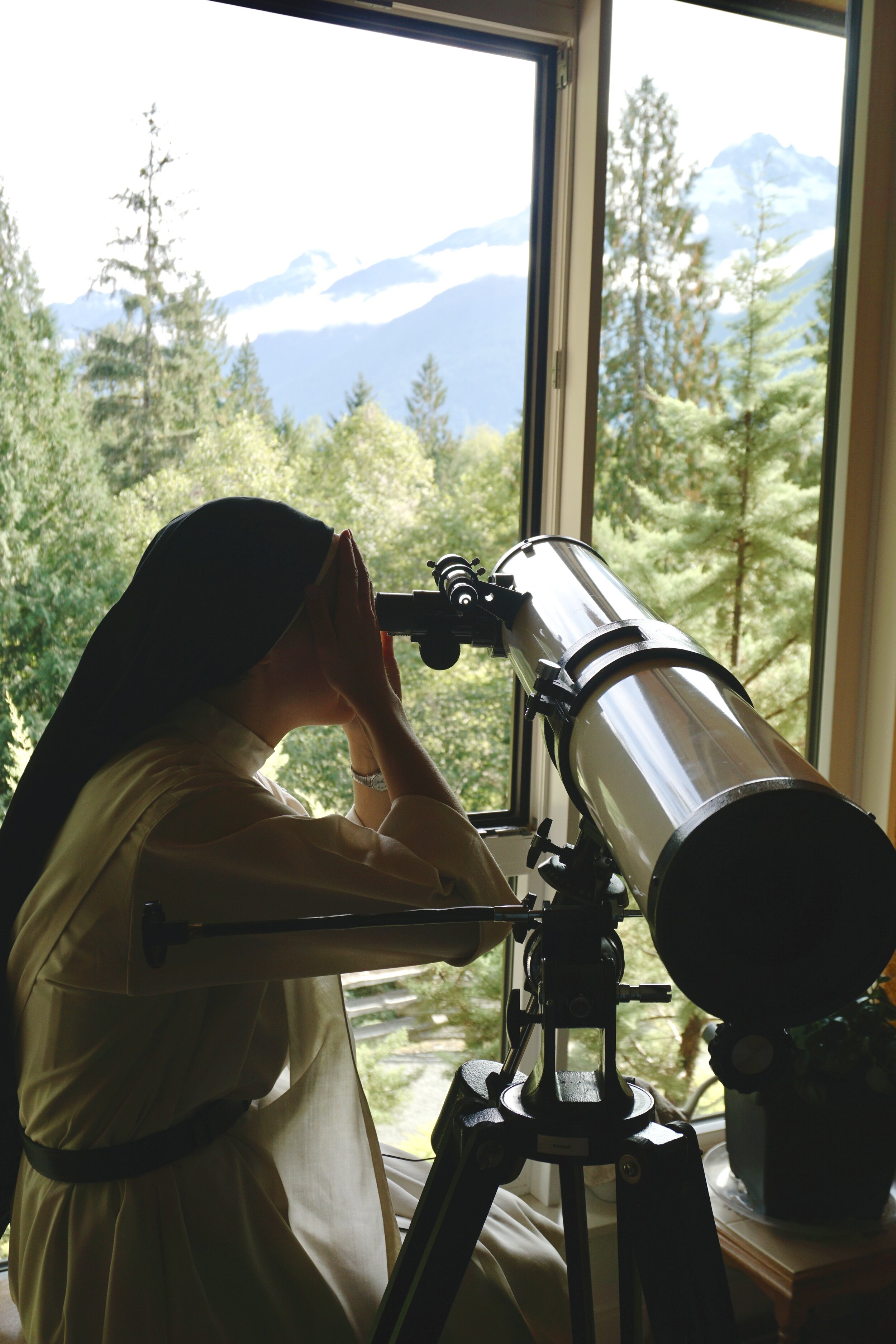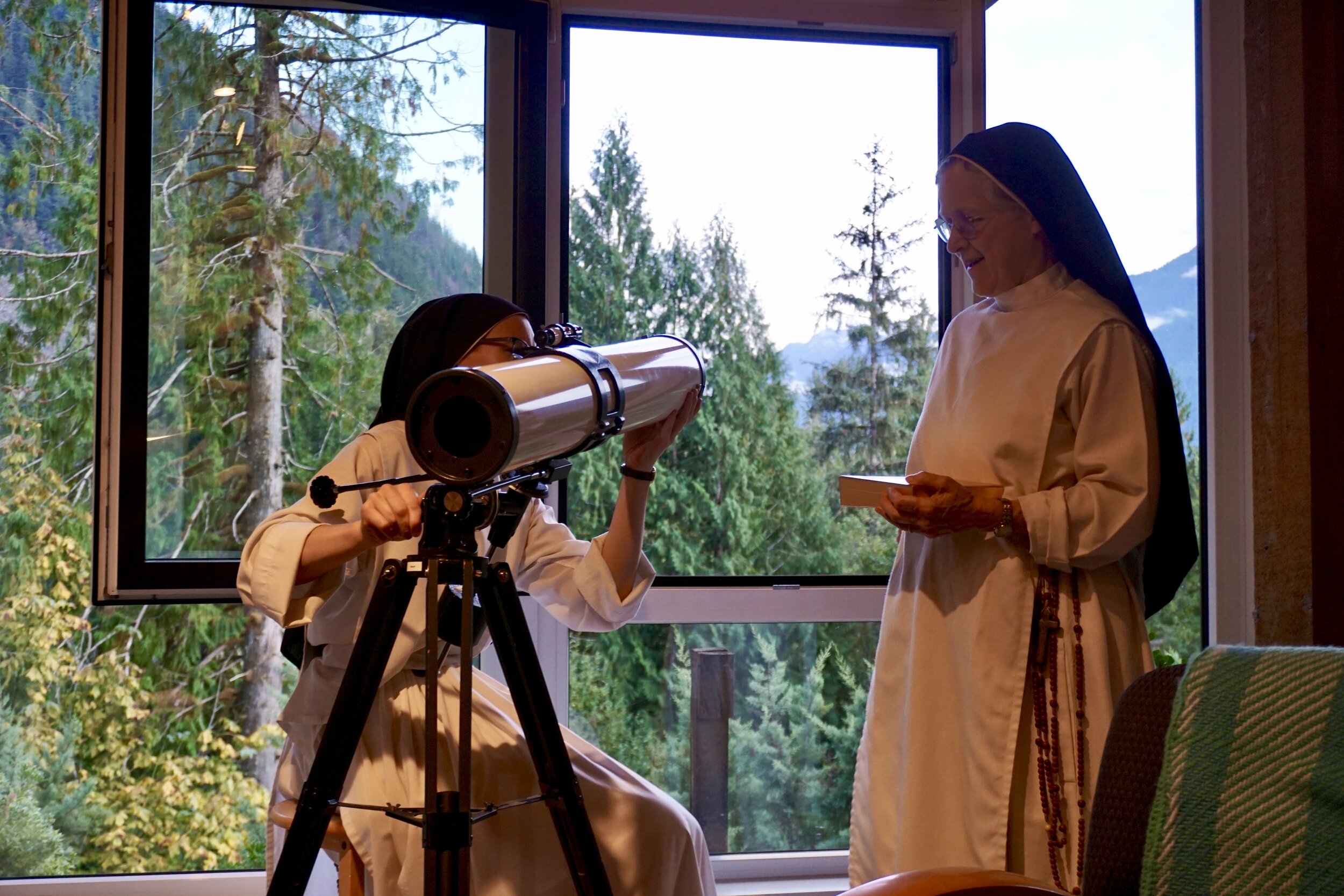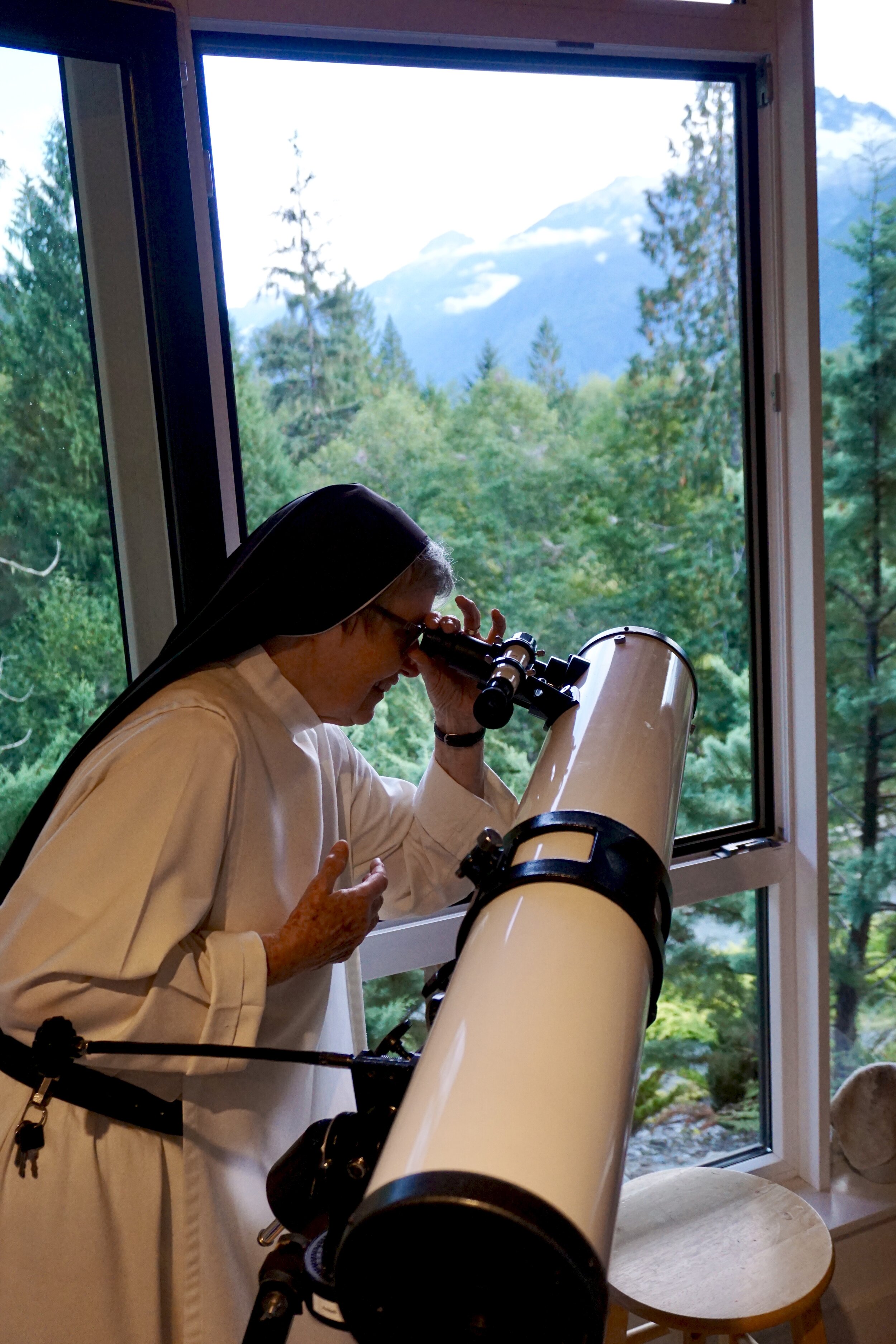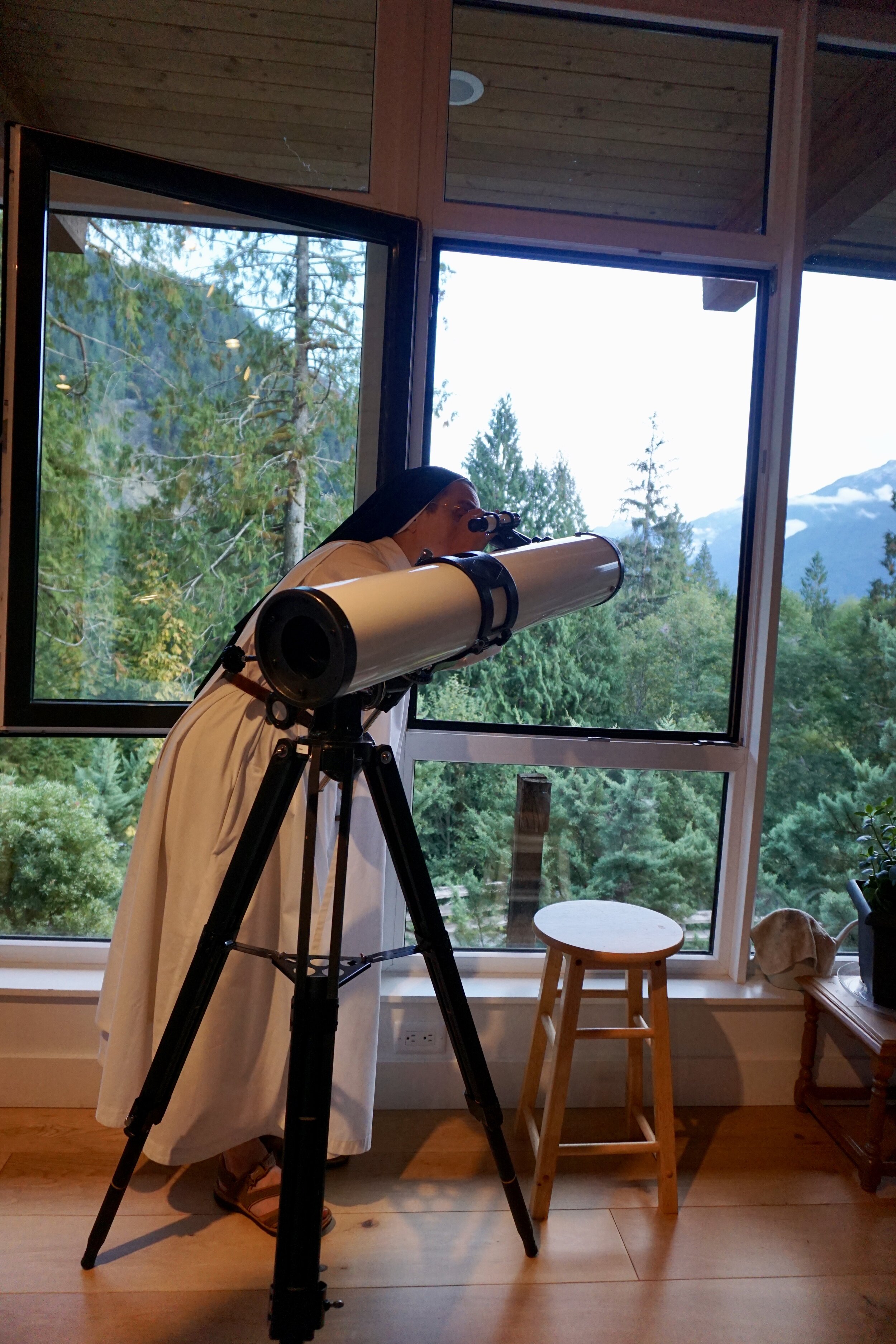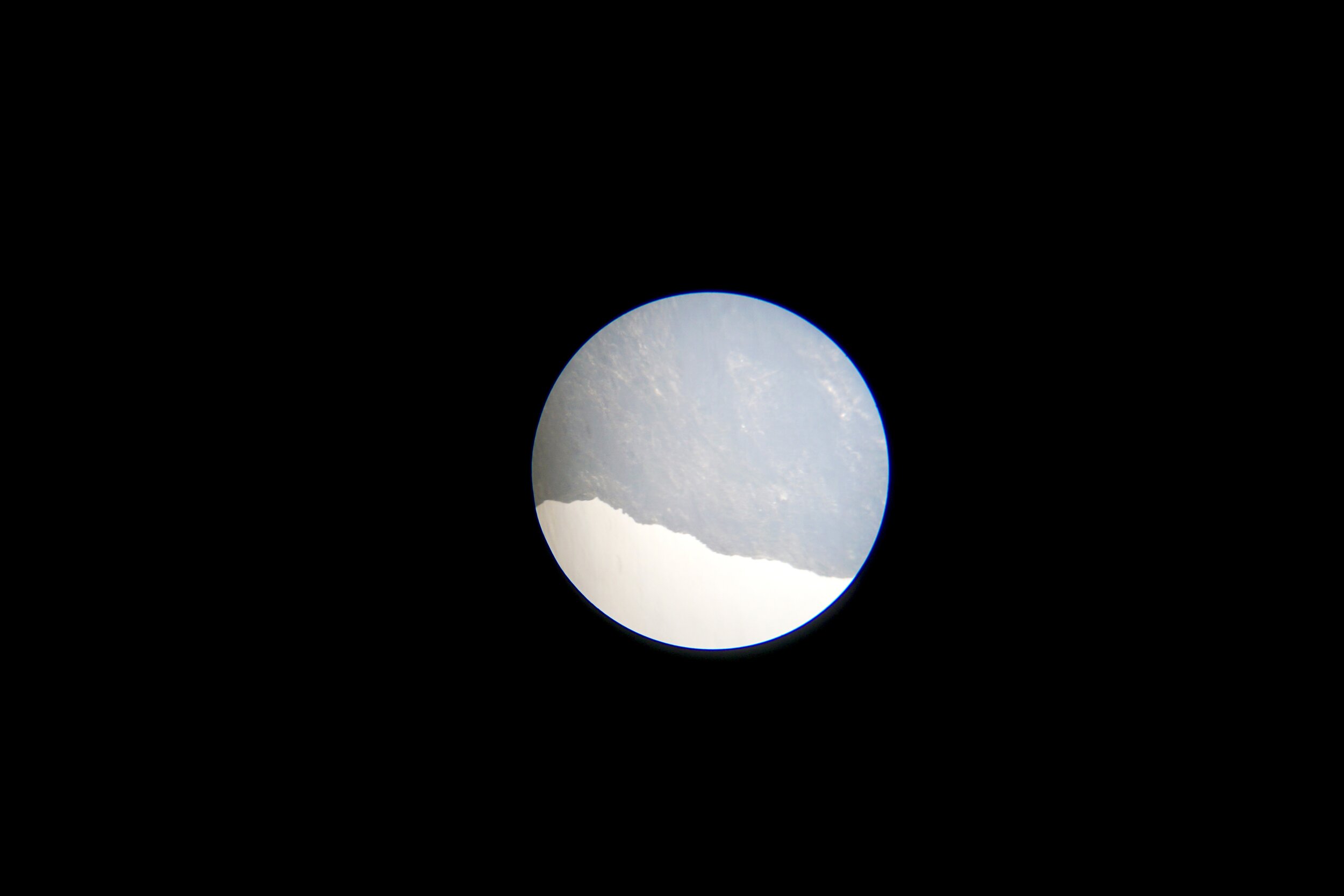Living where we do in the beautiful Upper Squamish Valley, our fellow mendicant St. Francis of Assisi has unsurprisingly left his mark on our Dominican community! Apart from a statue of him in the garden, this little friar from Italy is with us particularly when we praise God for the beauty of the mountains and local animals; when we celebrate the liturgy accompanied by the ever-changing song of local and migratory birds; and when we do our best to live simply and care for creation.
This year, the little saint’s feast was particularly special for us as we celebrated an official blessing and open house for our Pilchuk Creek Micro-Hydroelectricity project. Over ten years in the planning and building, this system now powers our monastery with clean, renewable energy, and was intentionally built to minimum impact on the creek and on the local forest. After a hymn, blessing and ribbon cutting, sisters and invited guests were given a tour of the facility. The celebration then moved up to the main monastery building, with a cake cutting, exhibit of the construction process, and a chance for those involved in the project to share stories and give thanks. The celebration finished with a duet on the koras, followed by Vespers.
It would be impossible to list here every one who contributed to this project, but we say to all of you: “thank-you.” God will reward your generosity, and your faith in our growing monastic community. We would like to express our particular gratitude to project leads Peter, Ron and John, all of whom were involved in the project on a daily basis with a truly extraordinary generosity of time, talent and effort. You are all, as always, in our prayers.
Celebration
Construction
Recently, St. Francis has been making appearances in our community’s life in other ways too. Historically, lower Pilchuk Creek (significantly downstream from the hydro project intake) is a spawning site for salmon. After approximately six years without a significant fall run, we rejoiced to welcome a large number of “pink” salmon (Oncorhynchus gorbuscha) this September. The fish move too fast to get a precise count, but we noticed at least three to four spawning sites with significant activity.
Finally, we also have our eyes on the heavens in a new way thanks to a telescope donated by a sister’s family. To give the community an introduction, we tested it out at recreation one night by learning to focus it on the glaciers; it has also been used to examine the surface of the moon. As the days grow shorter and nights grow longer, we’re looking forward to having more time for stargazing. There is almost no light pollution in our valley, so it should be possible to get clear views even of the other planets in our solar system. In an added nod to St. Francis, who (according to G.K. Chesterton) apparently had a dream about Assisi hanging upside-down off the earth, the system of the refractor telescope’s mirrors means that viewed objects actually appear upside-down!




